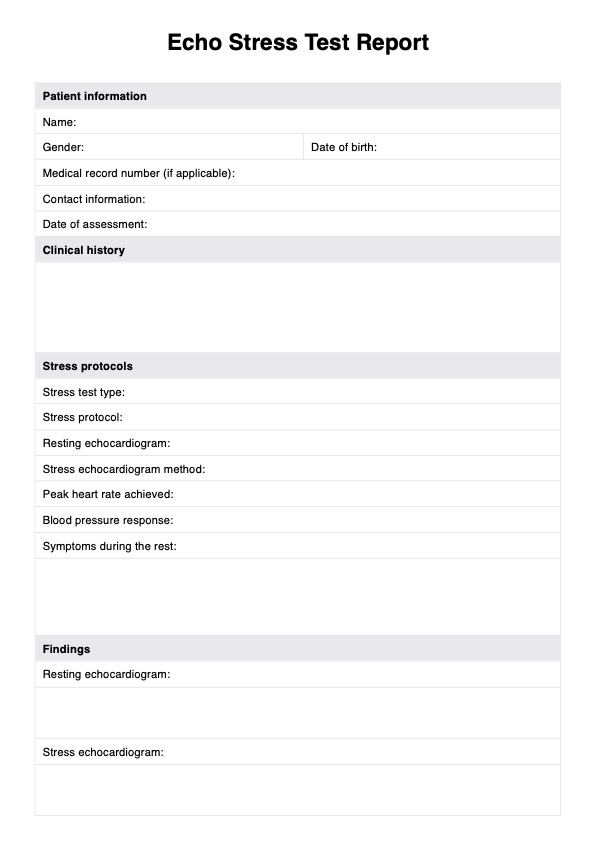Healthcare professionals, such as cardiologists or primary care physicians, may request an Echo Stress Test for their patients if they suspect heart disease or want to assess the overall health of the patient's heart.

Echo Stress Test
Get access to a free Echo Stress Test Report template. Document your patient results with Carepatron's user-friendly PDF template.
Use Template
Echo Stress Test Template
Commonly asked questions
An Echo Stress Test is generally considered safe, with minimal risks involved. However, there is a small risk of developing abnormal heart rhythms during the test, which healthcare providers are prepared to address. The benefits of accurate diagnosis often outweigh the risks.
The duration of an Echo Stress Test may vary, but on average, it takes about 30 minutes to an hour, including both the resting echocardiogram and the exercise portion.
EHR and practice management software
Get started for free
*No credit card required
Free
$0/usd
Unlimited clients
Telehealth
1GB of storage
Client portal text
Automated billing and online payments











